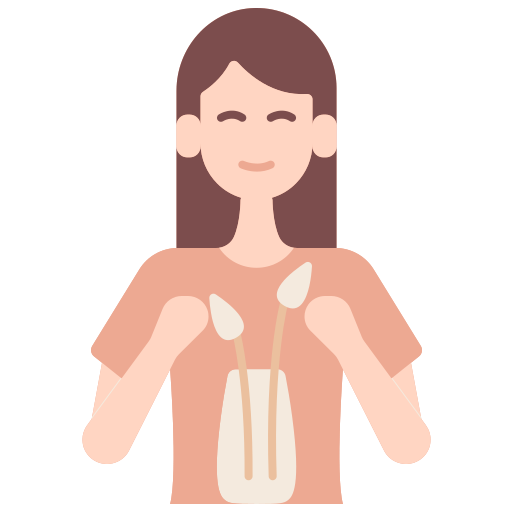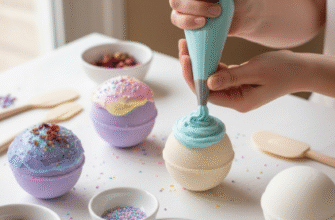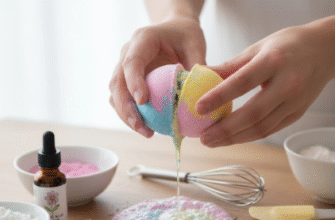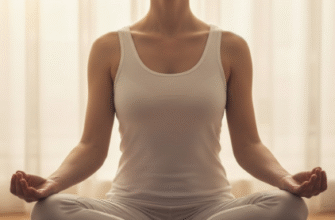Ever had a brilliant idea pop into your head while soaking in the tub, seemingly out of nowhere? Or maybe during a long, hot shower? You’re definitely not alone. It feels almost magical, this sudden clarity emerging from the steam and suds. But it’s less magic and more about the fascinating way our brains work when we finally allow ourselves to switch off and relax. There’s a genuine, tangible connection between the simple act of taking a bath and unlocking a smoother, more potent flow of creative thought.
For too long, we’ve associated productivity and idea generation purely with intense focus, staring at screens, and powering through mental blocks. We try to wrestle creativity into submission. But often, the best ideas are shy; they don’t respond well to pressure. They prefer to emerge when our mental guard is down, when we’re not actively *trying* so hard. This is where the humble bathtub enters the scene as an unlikely, yet powerful, creative tool.
The Science of Soaking: Why Relaxation Breeds Ideas
It boils down to how our brain shifts gears. When we’re focused on a task – answering emails, solving a specific problem, analysing data – we’re primarily using our brain’s “executive attention network.” This is great for directed, logical thinking. But creativity often requires a different approach, one that involves connecting seemingly unrelated concepts, daydreaming, and letting the mind wander. This is the realm of the “default mode network” (DMN).
The DMN becomes more active when we’re not focused on the outside world. Think about activities like daydreaming, meditating, light exercise, or yes, taking a warm bath. During these moments of lower cognitive load, our brain isn’t idle; it’s busy consolidating memories, reflecting on social interactions, and making novel connections between disparate pieces of information stored away. It’s like the brain’s background processing unit finally gets a chance to run its more imaginative programs.
Furthermore, relaxation, especially the kind induced by warm water, can trigger a release of dopamine. This neurotransmitter isn’t just about pleasure; it’s also heavily involved in motivation, learning, and, crucially, creativity. A relaxed state, combined with a gentle dopamine boost, creates fertile ground for new ideas to sprout. The warmth improves blood flow, including to the brain, and the physical release of muscle tension sends signals to the brain that it’s safe to let go of hyper-vigilance and enter a more diffuse state of awareness.
Research indicates that activities promoting relaxation and mind-wandering activate the brain’s Default Mode Network (DMN). This network is strongly linked to creative thinking processes, including idea generation and problem-solving. Engaging in low-demand activities, like bathing, allows the DMN to forge new connections between existing knowledge. This shift away from focused attention is often key to overcoming creative blocks.
More Than Just Warm Water: The Unique Power of the Bath
While any relaxing activity can potentially spark creativity, baths offer a unique combination of factors that make them particularly effective:
Sensory Shift: A bath engages multiple senses in a gentle, non-demanding way. The warmth of the water, the feeling of buoyancy reducing the pull of gravity, the muffled sounds (or deliberate silence), the potential addition of subtle scents – it all creates an environment vastly different from our usual stimulating surroundings. This sensory shift helps disconnect us from external stressors and encourages inward focus.
Forced Slowdown: Unlike scrolling through social media or watching TV (which can still be mentally taxing), a bath inherently requires you to slow down. You can’t easily multitask. This enforced pause is crucial. It carves out dedicated time where your mind isn’t being bombarded with urgent demands or endless information streams. It’s a permission slip to simply *be*.
Privacy and Solitude: For many, the bathroom is one of the few places offering genuine privacy. This solitude removes the pressure of social interaction or performance, creating a safe space for thoughts – even half-baked or unconventional ones – to surface without judgment.
Physical Relaxation Triggering Mental Relaxation: The link between body and mind is undeniable. As warm water soothes aching muscles and releases physical tension, it sends powerful signals to the brain that it’s okay to relax mentally too. Letting go of physical tightness often corresponds with loosening rigid thought patterns.
Archimedes and the Original “Eureka!” Moment
We can’t discuss baths and ideas without mentioning the classic story of Archimedes. Tasked with determining if a crown was pure gold without damaging it, he was stumped. The legend goes that the solution hit him as he stepped into a bath and noticed the water level rise. He realised the volume of displaced water must be equal to the volume of the part of his body submerged. This principle allowed him to measure the crown’s volume and, by comparing its weight and volume, determine its density and thus its purity. While the historical details might be embellished, the core idea resonates: the insight arrived not while he was hunched over calculations, but during a moment of mundane relaxation – a bath. It exemplifies how stepping away from the problem allowed his subconscious to connect the dots.
Making Your Bath a Creative Catalyst: Practical Tips
Want to leverage your bath time for better ideas? It’s less about complicated rituals and more about creating the right conditions for your mind to wander freely.
1. Set an Intention (Loosely)
You don’t need to go in with a strict agenda, but gently holding a question or creative problem in the back of your mind can be helpful. Don’t actively try to solve it; just let it float there as you relax. The DMN works best when not under direct command.
2. Minimize Distractions
This is key. Leave the phone in another room or put it on silent. Avoid bringing complex reading material. The goal is *less* input, not different input. Soft music or silence works best for most; avoid anything with lyrics or complex structures that demand attention.
3. Focus on the Sensory Experience
Pay attention to the feeling of the warm water on your skin, the sound of the water, the steam rising. This gentle mindfulness anchors you in the present moment and helps quiet the mental chatter about your to-do list or worries. It encourages the shift away from the executive attention network.
4. Embrace Boredom
Initially, you might feel restless or bored without your usual distractions. This is normal! See this boredom not as a negative, but as the space creativity needs to emerge. Let your thoughts drift wherever they want to go, without judgment.
5. Keep a Capture Tool Nearby (But Not *Too* Nearby)
Ideas are fleeting. Have a way to jot them down quickly once you’re out, or use a waterproof notepad if you’re prone to forgetting. However, don’t keep it so close that you’re constantly tempted to *work* while in the tub. The goal is relaxation first; capture second.
6. Don’t Force It
Some baths will yield brilliant ideas; others will just be relaxing baths. Both outcomes are perfectly fine. Trying too hard to be creative is counterproductive. Just enjoy the process of unwinding, and trust that you’re creating the right mental environment for insights to appear, either now or later.
The connection between bathing and creativity isn’t about a magical property of water itself, but about the mental state a bath facilitates. It’s a deliberate act of stepping away from the noise, the pressure, and the focused effort, allowing our wonderfully complex brains to do what they do best when given the space: connect, wander, and create. So next time you feel stuck or creatively drained, consider drawing a warm bath. It might be just the thing your default mode network needs to deliver that elusive ‘Eureka!’ moment.








